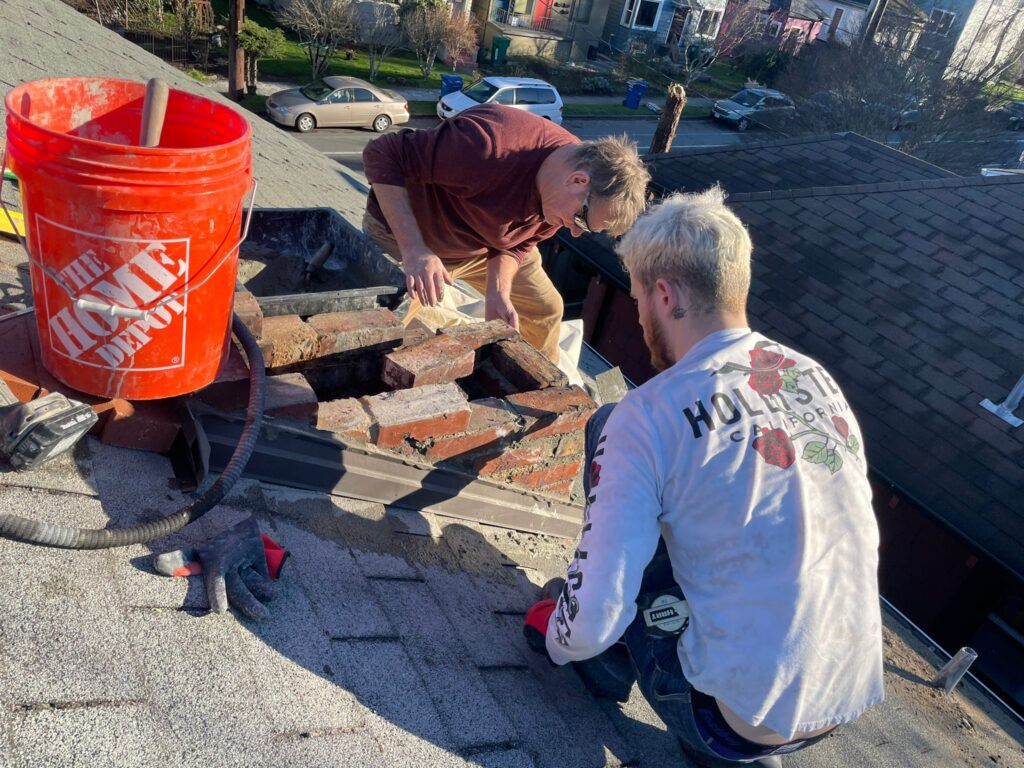As the summer season sets in, homeowners often forget about their chimneys, focusing more on air conditioning and outdoor activities. However, summer is an excellent time for chimney maintenance. Proper upkeep during these warmer months ensures your chimney is safe and efficient for the colder season. Here are ten essential tips for maintaining your chimney during the summer:
1. Schedule a Professional Inspection
One of the most critical steps in chimney maintenance is scheduling a professional inspection. A certified chimney sweep can identify any issues such as creosote buildup, structural damage, or blockages. Addressing these problems in the summer can prevent potential hazards during the winter.

2. Clean the Chimney
Even if you haven’t used your fireplace much during the last season, it’s essential to clean the chimney thoroughly. Creosote, a byproduct of burning wood, can accumulate and become a fire hazard. A professional cleaning will remove this buildup, reducing the risk of chimney fires.
3. Check for Animal Nests
During the warmer months, animals such as birds, squirrels, and raccoons may find your chimney a perfect spot for nesting. These nests can obstruct the flue, preventing proper ventilation and potentially causing dangerous gases to enter your home. Inspect and remove any nests to ensure a clear passage.
4. Install a Chimney Cap
A chimney cap is a vital accessory that prevents rain, debris, and animals from entering your chimney. It also helps in keeping sparks and embers from escaping, reducing the risk of a roof fire. Installing or inspecting a chimney cap during the summer ensures it is in good condition for the winter months.
5. Repair Any Structural Damage
Over time, chimneys can develop cracks and other structural issues due to weather exposure and usage. Inspect your chimney for any visible damage, such as cracks in the masonry or deteriorating mortar. Addressing these repairs during the summer can prevent further damage and ensure the chimney’s integrity.
6. Waterproof the Chimney
Chimneys are exposed to the elements year-round, making them susceptible to water damage. Applying a waterproof sealant during the summer can protect the masonry from rain and moisture, preventing leaks and structural degradation. Waterproofing extends the life of your chimney and reduces maintenance costs.
7. Inspect the Flashing
Flashing is the metal barrier that seals the area where the chimney meets the roof. Over time, flashing can become loose or damaged, leading to leaks. Inspect the flashing for any signs of wear and tear, and repair or replace it as necessary to prevent water infiltration.
8. Clear the Surrounding Area
Ensure the area around your chimney is clear of any debris, leaves, or overhanging branches. This reduces the risk of fire and improves airflow. Keeping the surroundings tidy also makes it easier to spot any potential issues with your chimney.
9. Test the Damper
The damper controls the airflow in and out of your chimney. A properly functioning damper is essential for energy efficiency and safety. Test the damper to ensure it opens and closes smoothly. If it’s stuck or difficult to operate, it may need cleaning or repair.
10. Plan Ahead for Winter
Use the summer months to plan any major repairs or upgrades for your chimney. Whether it’s relining the flue, installing a new fireplace insert, or upgrading to a high-efficiency wood stove, summer is the ideal time to schedule these projects. Contractors are typically more available, and you can avoid the rush of last-minute repairs in the fall.
Conclusion
Summer is the perfect time to give your chimney the attention it deserves. By following these ten tips, you can ensure your chimney is in top condition, ready for the winter season. Regular maintenance not only extends the life of your chimney but also enhances the safety and efficiency of your home. Don’t wait until the cold weather sets in—take action now and enjoy a worry-free winter.

